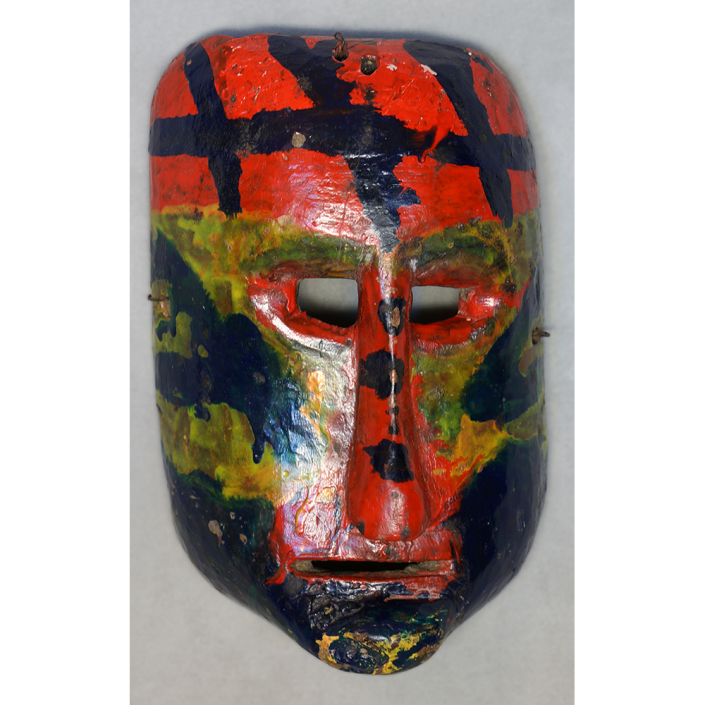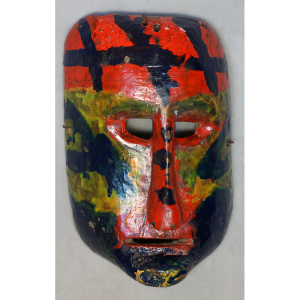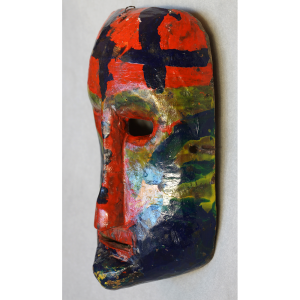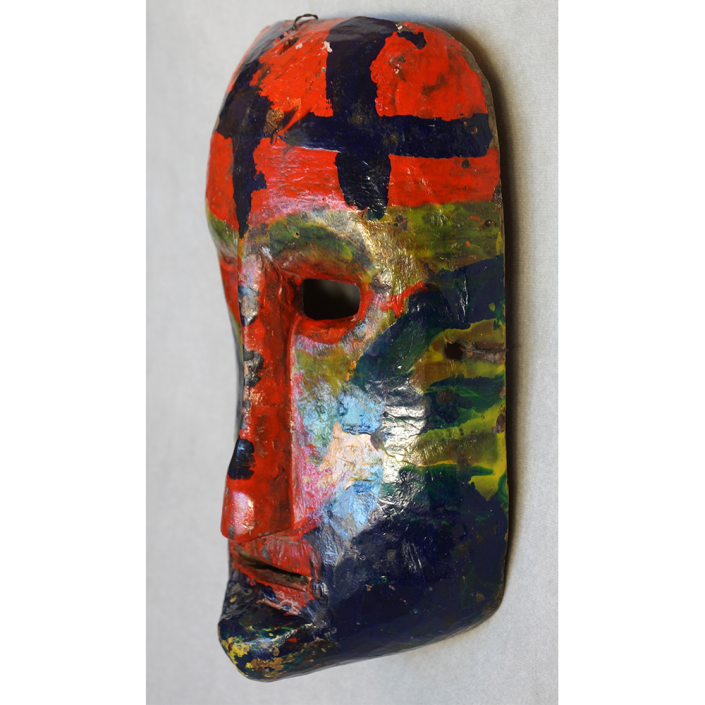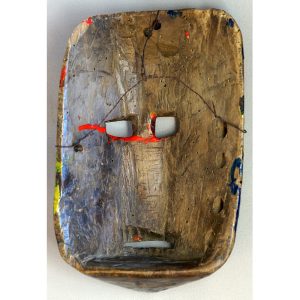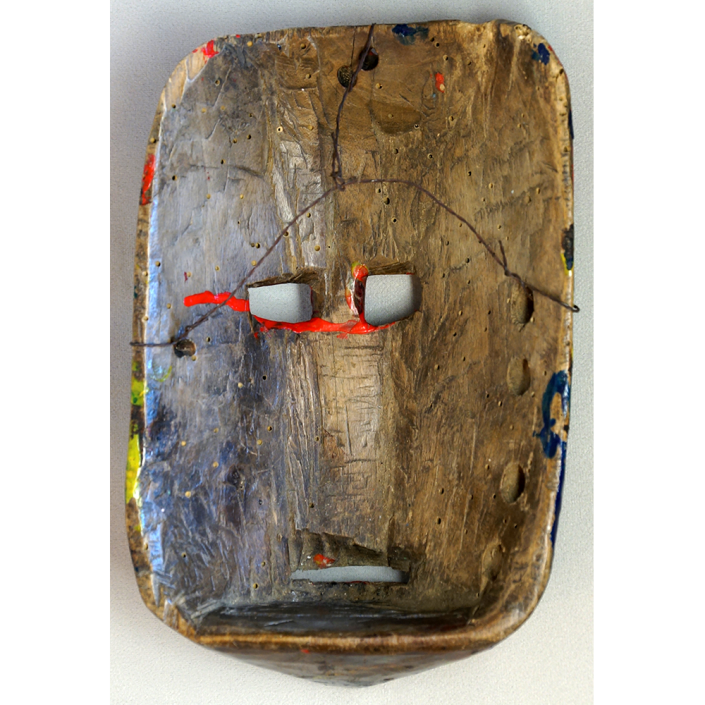TITLE: Mazate Mask
TYPE: face mask
GENERAL REGION: Latin America
COUNTRY: Guatemala
SUBREGION: Baja Verapaz
ETHNICITY: Mayan (Achí)
DESCRIPTION: Mazate (old man) mask
CATALOG ID: LAGT014
MAKER: Unknown maker in Salamá
CEREMONY: Danza de los Mazates
AGE: 1950s
MAIN MATERIAL: wood
OTHER MATERIALS: oil-based paint
The Danza de los Mazates in Baja Verapaz has many incarnations, but most go under the Spanish name Baile (or Danza) de los Viejitos (Dance of the Little Old Men). This is one of the oldest dances in this region of Guatemala and is performed to honor the patron saint of the village. The mazate itself is a deer, and the dance relates to a hunt for deer in the mountains (white-tailed deer). The hunters are represented as men in deteriorated rags and squirrel pelts, wearing grotesque, dark-colored masks, and carrying staves, rattles and wide-brimmed hats. Among the mazate dancers are two distinguished ones: the Mazate Anciano (elder mazate) and the Mazate Joven (young mazate). In most regions, the mazate masks resembling old men with some degree of realism, but in the distant past, masks could be more abstract and wilder in appearance. Even today, the village of Salamá, where this mask originated, tend to have a more exaggerated look. There is also a single female character, whose role is to attract the deer for the hunters.
The dance takes place to the beat of a large, wood drum (tun) and a small snare drum (tabor). It likely originates in pre-Catholic rituals to bring rain or a good hunt.
For more on Guatemalan masks, see Jim Pieper, Guatemala’s Masks and Drama (University of New Mexico Press, 2006).
